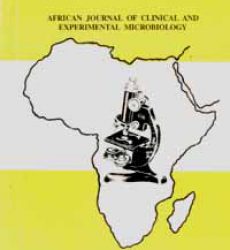*Ajayi, A. A., Onipede, G. O., Okafor, B. C., Adepoju, K. A., and Nwabuenu, J. C.
Department of Biological Sciences, Augustine University, Ilara Epe, Lagos State, Nigeria
*Correspondence to: adesola.ajayi@augustineuniversity.edu.ng
Abstract:
Background: The Sungbo Eredo Monument is an ancient public work with a system of defensive walls and ditches located in Eredo Local Council Development Area of Epe, Lagos State, southwest Nigeria. A huge section of the monument cuts through the Augustine University campus, forming two-sided vertical walls with a deep ridge in-between. The objective of this investigative study is to determine the microbial profile of soil samples from the monument in the University campus.
Methodology: Soil samples were collected from the topsoil at a depth of 7.5cm from four randomly selected points along the edge of the monument. The samples were transported to the microbiology laboratory of the Department of Biological Sciences of Augustine University for analysis. Samples were cultured on Nutrient agar (NA) and incubated aerobically for 24-48 hours for bacteria isolation and on Sabouraud’s Dextrose agar (SDA) for 72 hours for fungi isolation. Bacterial colonies on NA were preliminarily identified to genus level by Gram reaction and conventional biochemical test scheme for Gram-positive (catalase, coagulase, starch hydrolysis) and Gram-negative isolates (oxidase, urease test, indole, methyl red, Voges Proskauer and sugar fermentation tests). Fungi colonies on SDA were identified using conventional macroscopic and microscopic characteristics. Antibiotic susceptibility test of the bacterial isolates to selected antibiotics was done using the Kirby Bauer disc diffusion method. Continue reading “Phenotypic identification of soil bacterial and fungal communities inhabiting an archaeological monument at Augustine University, Ilara Epe, southwest Nigeria”

